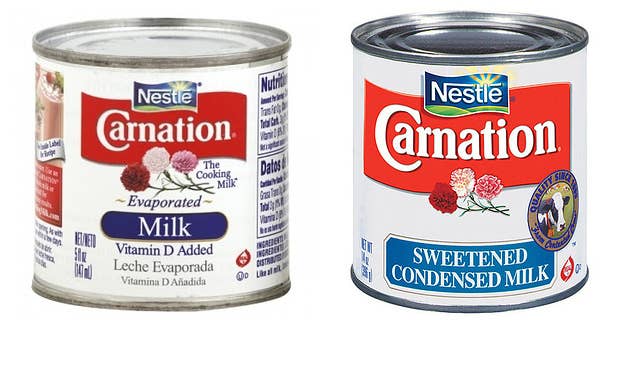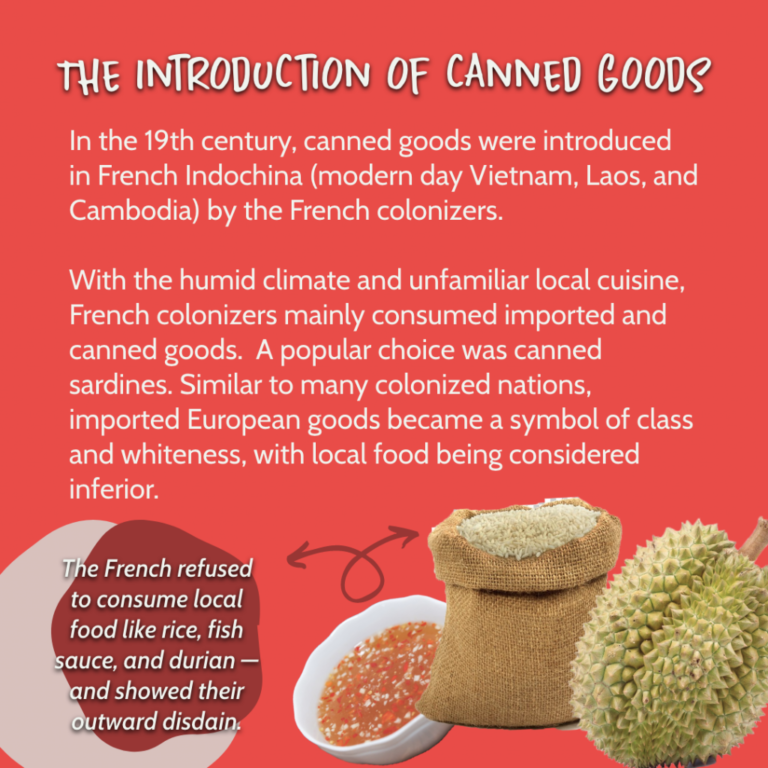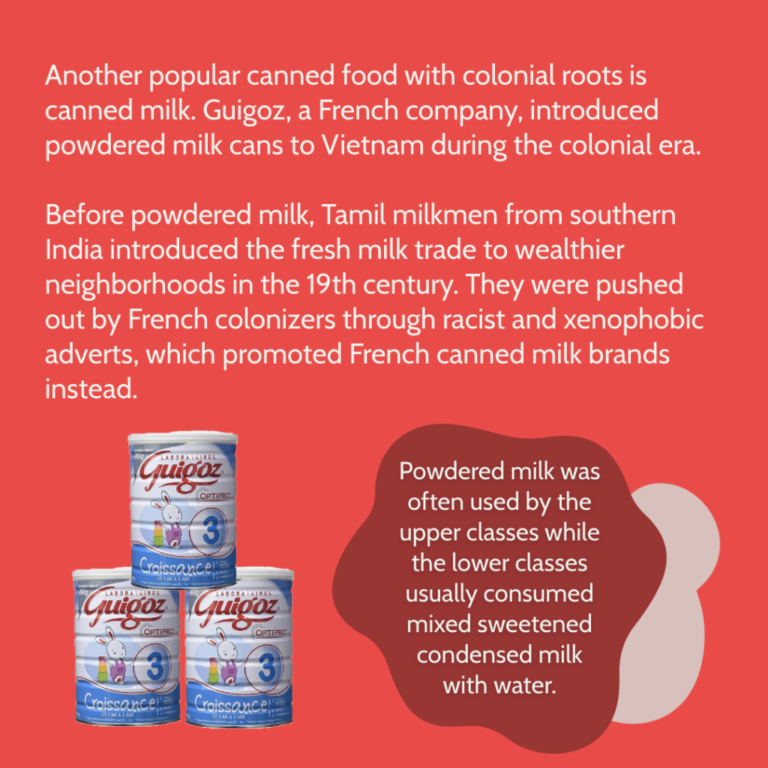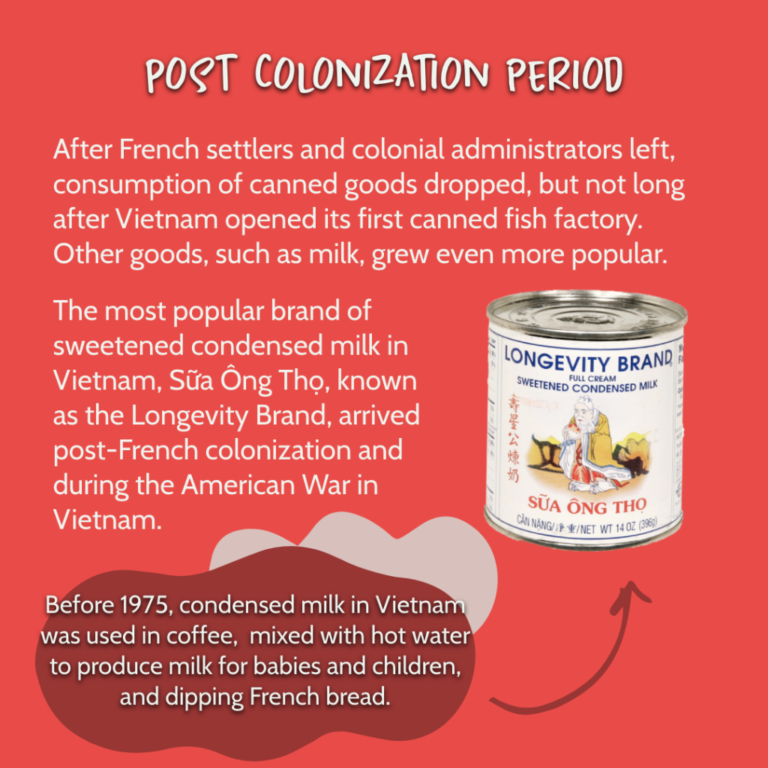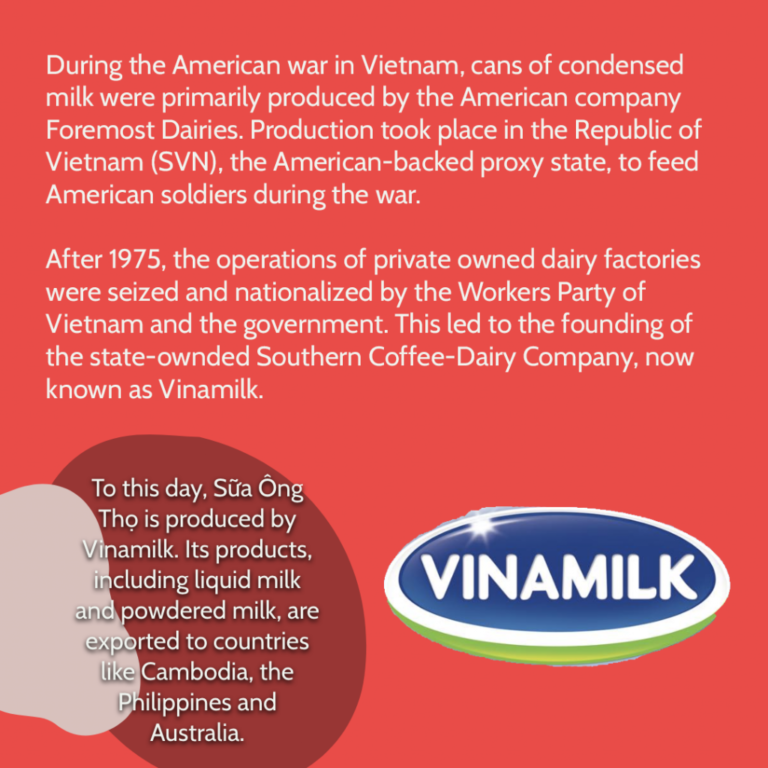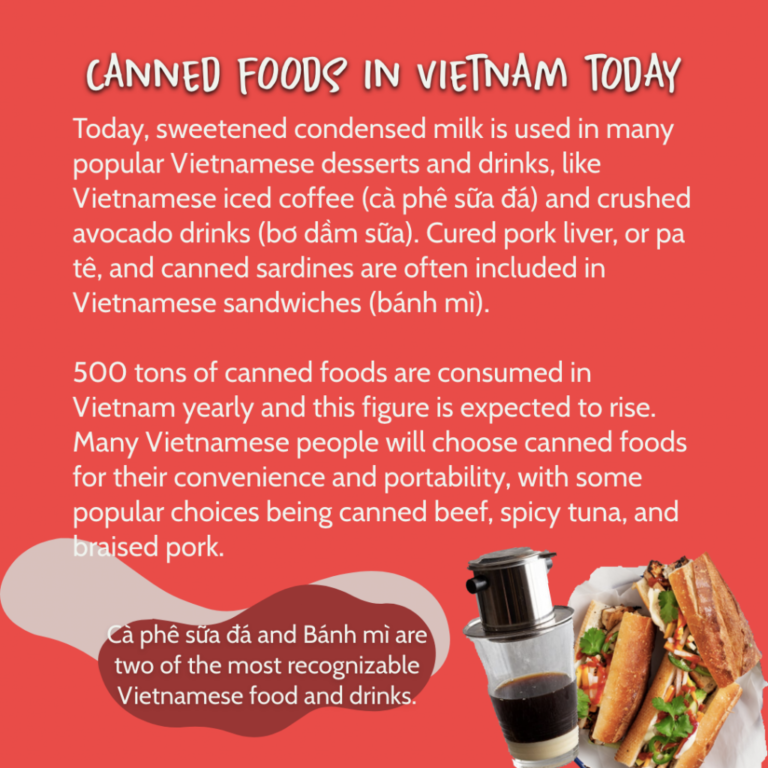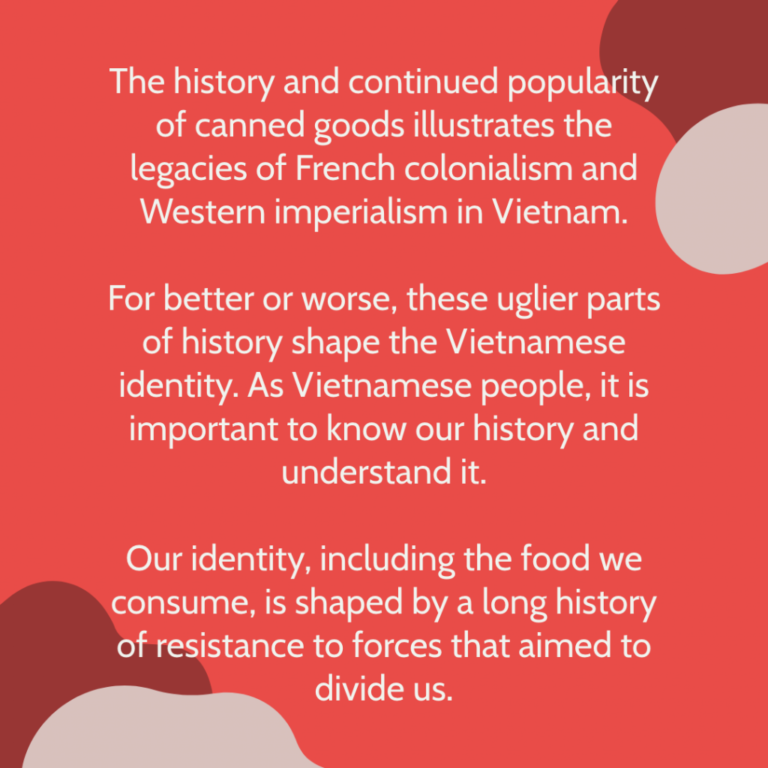Many beloved food staples in Vietnamese culture like condensed milk, cured pork liver pâté, and canned sardines, are actually products of French colonization and American imperialism.
The introduction of canned foods
In the 19th century, canned goods were introduced in French Indochina (modern day Vietnam, Laos, and Cambodia) by the French colonizers.
With the humid climate and unfamiliar local cuisine, French colonizers mainly consumed imported and canned goods. A popular choice was canned sardines. Similar to many colonized nations, imported European goods became a symbol of class and whiteness, with local food being considered inferior.
Another popular canned food with colonial roots is canned milk. Guigoz, a French company, introduced powdered milk cans to Vietnam during the colonial era.
Before powdered milk, Tamil milkmen from southern India introduced the fresh milk trade to wealthier neighborhoods in the 19th century. They were pushed out by French colonizers through racist and xenophobic adverts, which promoted French canned milk brands instead.
Post colonization period
After French settlers and colonial administrators left, consumption of canned goods dropped, but not long after Vietnam opened its first canned fish factory. Other goods, such as milk, grew even more popular.
The most popular brand of sweetened condensed milk in Vietnam, Sữa Ông Thọ, known as the Longevity Brand, arrived post-French colonization and during the American War in Vietnam.
Before 1975, condensed milk in Vietnam was used in coffee, mixed with hot water to produce milk for babies and children, and dipping French bread.
During the American war in Vietnam, cans of condensed milk were primarily produced by the American company Foremost Dairies. Production took place in the Republic of Vietnam (SVN), the American-backed proxy state, to feed American soldiers during the war.
After 1975, the operations of private owned dairy factories were seized and nationalized by the Workers Party of Vietnam and the government. This led to the founding of the state-owned Southern Coffee-Dairy Company, now known as Vinamilk.
To this day, Sữa Ông Thọ is produced by Vinamilk. Its products, including liquid milk ant powdered milk, are exported to countries like Cambodia, the Philippines, and Australia.
Canned foods in Vietnam today
Today, sweetened condensed milk is used in many popular Vietnamese desserts and drinks, like Vietnamese iced coffee (cà phê sữa đá) and crushed avocado drinks (bơ dầm sữa). Cured pork liver, or pa tê, and canned sardines are often included in Vietnamese sandwiches (bánh mì).
500 tons of canned foods are consumed in Vietnam yearly and this figure is expected to rise. Many Vietnamese people will choose canned foods for their convenience and portability, with some popular choices being canned beef, spicy tuna, and raised pork.
Cà phê sữa đá and bánh mì are two of the most recognizable Vietnamese food and drinks.
The history and continued popularity of canned goods illustrates the legacies of French colonialism and Western imperialism in Vietnam.
For better or worse, these uglier parts of history shape the Vietnamese identity. As Vietnamese people, it is important to know our history and understand it.
Our identity, including the food we consume, is shaped by a long history of resistance to forces that aimed to divide us.
Sources
Food Anxiety in Globalising Vietnam by Judith Ehlert and Nora Katharina Faltmann
History in a Tin: The Colonial Past of Vietnam Through Popular Canned Food by Thi Nguyen (Saigoneer)
Canned food sees strong growth in Vietnam market by Thongtan Foodstuff Co.
